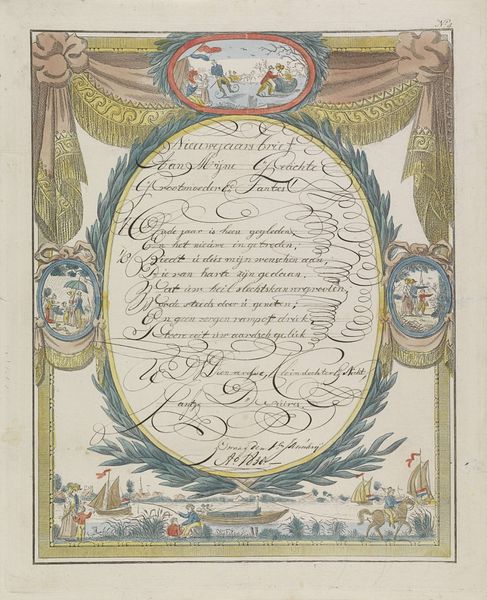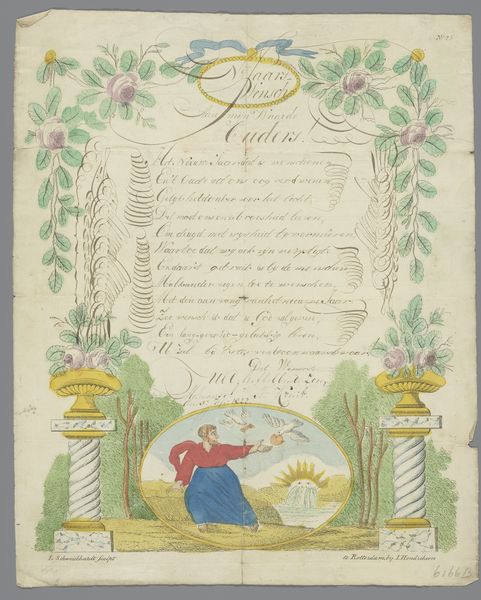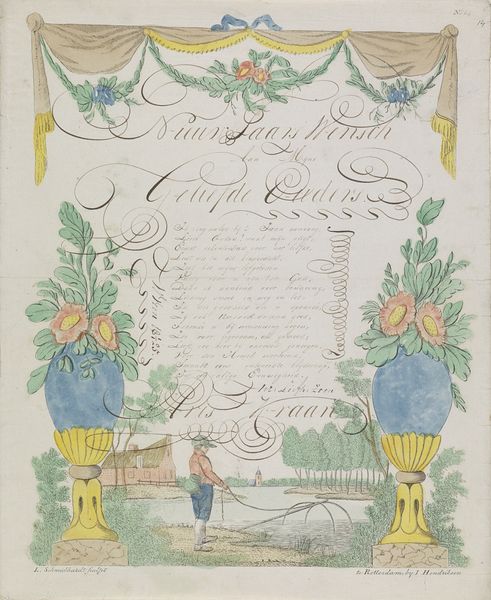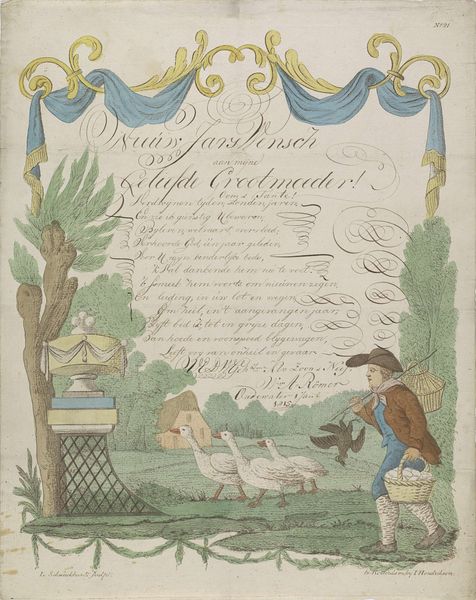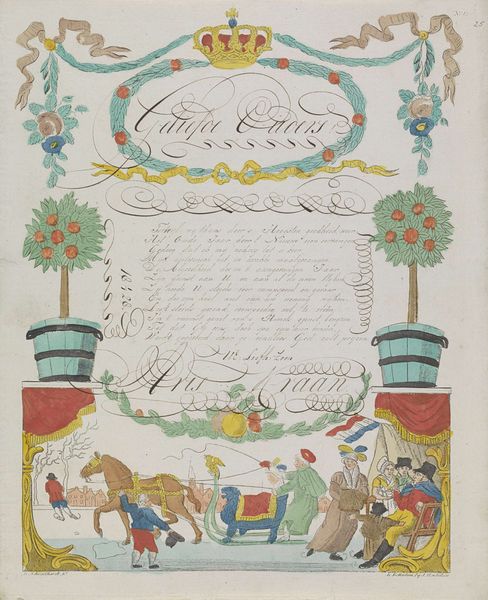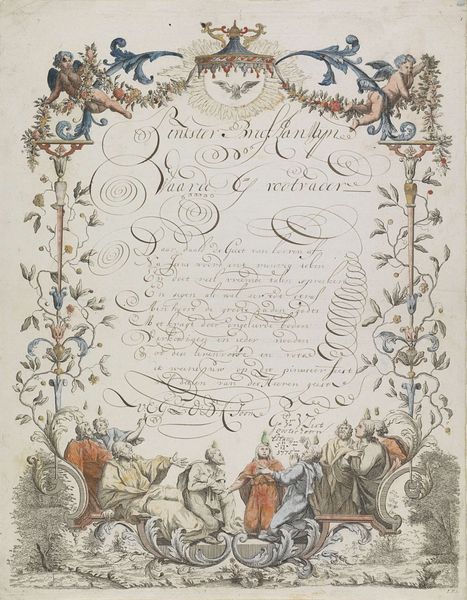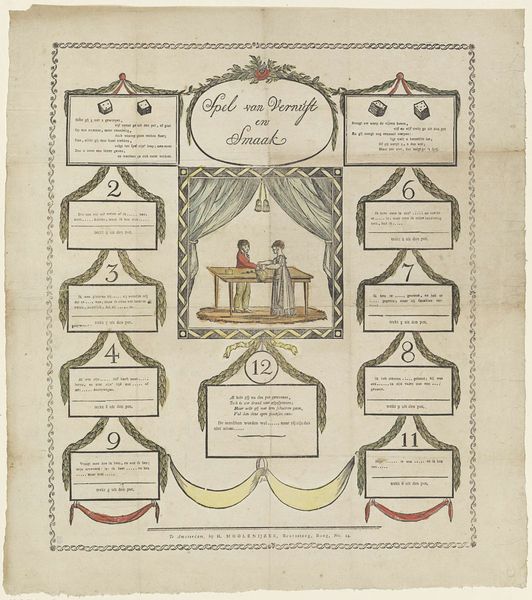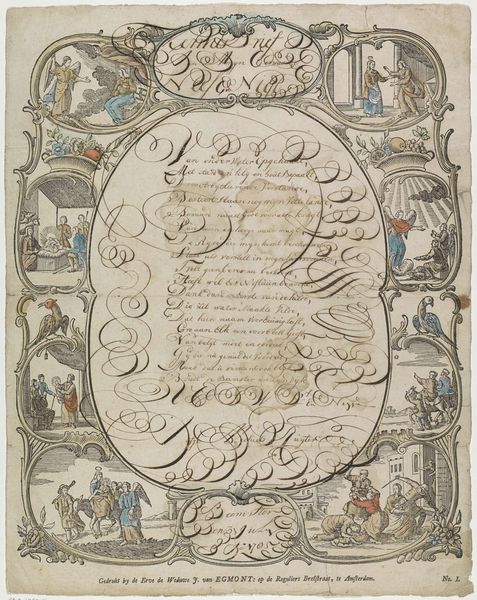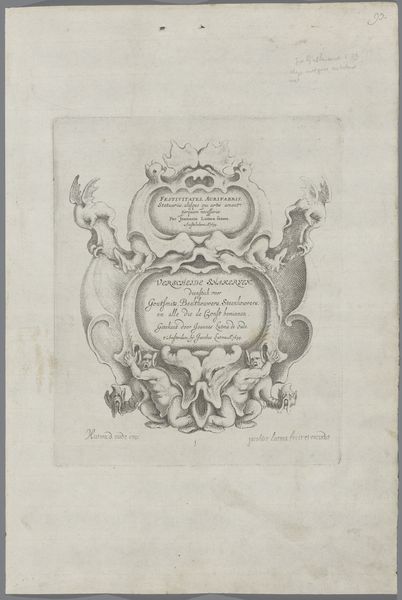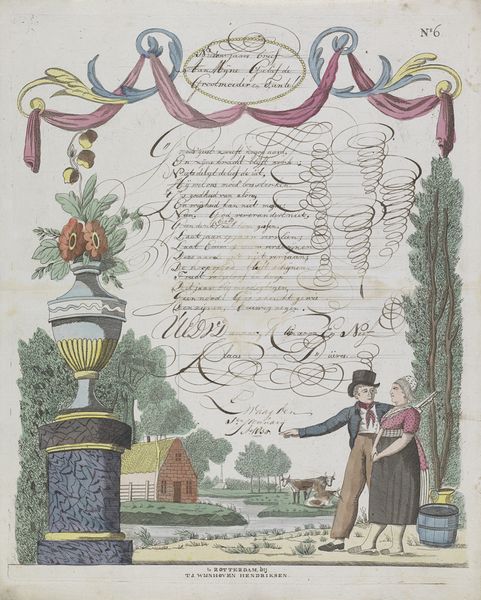
drawing, watercolor, pen
#
drawing
#
landscape
#
figuration
#
watercolor
#
coloured pencil
#
romanticism
#
pen
#
watercolour illustration
#
miniature
#
watercolor
Dimensions: height 416 mm, width 340 mm, height 410 mm, width 322 mm
Copyright: Rijks Museum: Open Domain
Editor: This is "Wensbrief met man in roeiboot," dating from sometime between 1812 and 1849, made with drawing, watercolor, and pen. It is on display here at the Rijksmuseum and it depicts what seems to be a tranquil river scene beneath a frame of decorative writing. What aspects of the artwork do you find most striking or want to share more about? Curator: Let us consider, first, the structural relationship between the calligraphic text and the figural representation. Observe how the meticulously rendered script, replete with elegant flourishes, occupies the dominant portion of the picture plane. Do you see how its verticality is mirrored, almost mimicked, by the slender trees that frame the watery vignette below? Editor: Yes, I see that. It's as if the writing itself becomes a landscape element. What effect does that structure produce? Curator: The composition cleverly juxtaposes two distinct modes of representation: the linguistic and the visual. The formal arrangement compels us to read the image, not just as a picturesque scene, but as a carefully constructed artifact, calling attention to its own artifice and design. The choice of delicate watercolor further underscores the constructed, rather than organic, nature of the artwork. Notice how even the limited palette contributes to this unified formal experience. Editor: So you're saying the key to appreciating it is recognizing how its different elements interact and support each other formally? Curator: Precisely. The semantic content of the letter is, in this respect, secondary. Our focus should remain on decoding the visual rhetoric employed by the artist. What do you make of the repeated curves and floral motifs that weave throughout the composition? Editor: I guess they create a sense of harmony and rhythm that tie it together. I didn't initially see it that way, I was too focused on the little scene with the boat! It's fascinating to consider it from a structural perspective. Curator: Indeed, shifting our focus allows us to recognize the work not just as a sentimental keepsake but as a sophisticated exercise in visual composition and symbolic form.
Comments
No comments
Be the first to comment and join the conversation on the ultimate creative platform.

